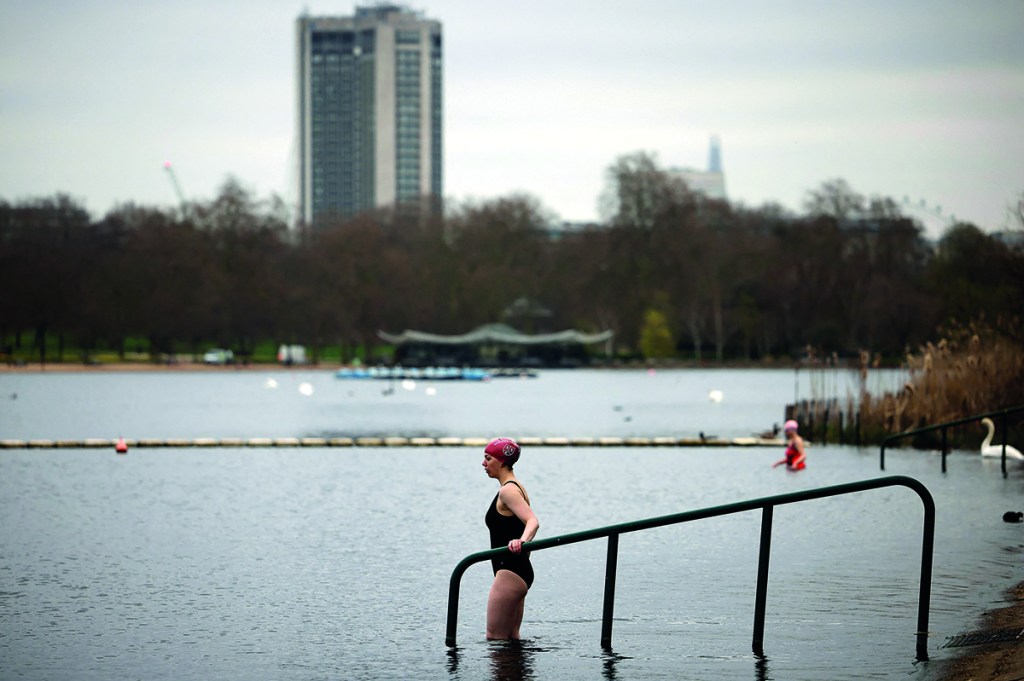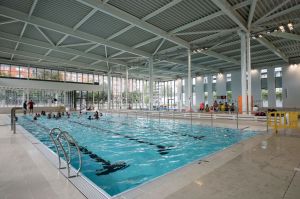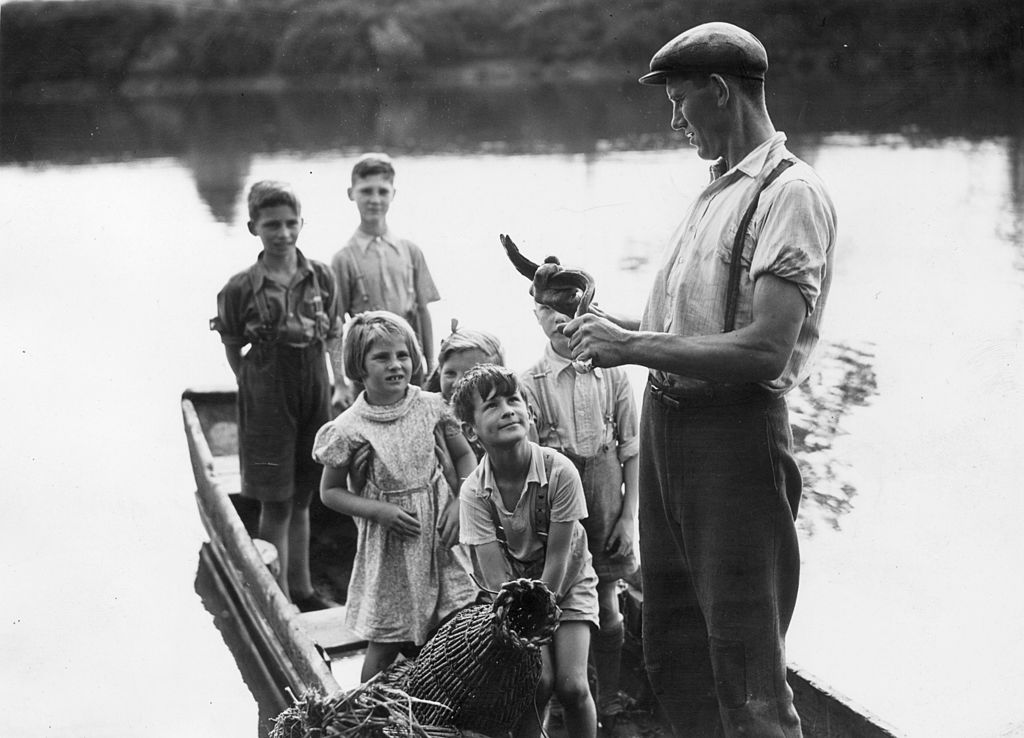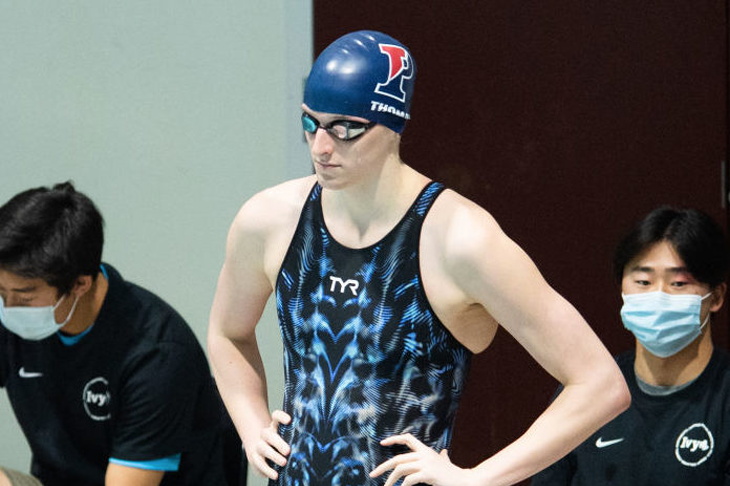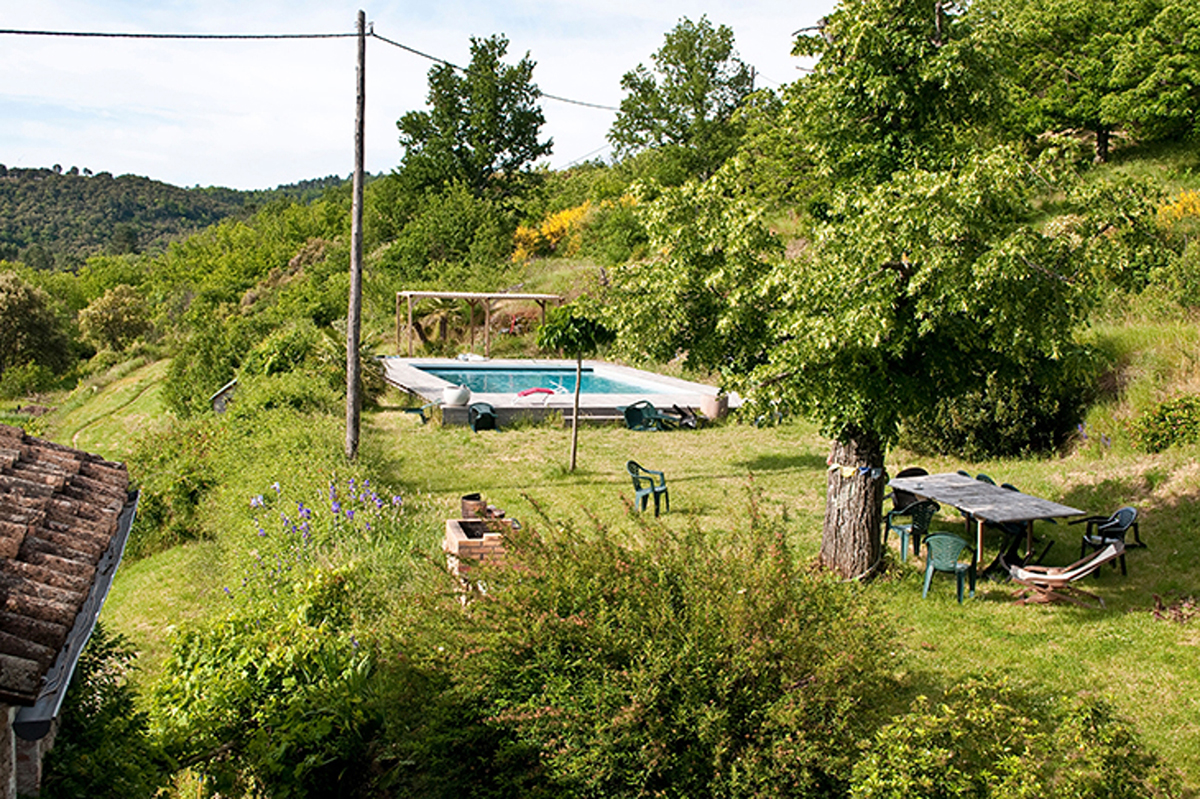The woman on the path has come to a dead stop. She’d been shuffling along in that bunched-up posture we all developed when we bought smartphones, a two-fingered salute to the millennia of evolution that managed to pull humans into an upright position. Now she’s staring, open-mouthed, at her surroundings.
I rather enjoy the shocked faces of passersby who catch sight of us swimmers at the Serpentine Pond in Hyde Park in our flimsy suits as we lower ourselves into the cold water each morning. I look still more shocking when I get out. My skin turns from its normal skimmed-milk color to bright neon, as though it has been slapped. And it has in a way: when you first enter water thats barely above freezing, you do get a shock. That gasping moment when your body tenses and your eyes open wider than you thought possible is one of the reasons I look forward to my winter swims so much. It’s like eating just a bit too much mustard, or or a puckeringly sour candy.
Few winter swimmers bother with wetsuits because you don’t feel the water so much. Most of us wear neoprene gloves and socks to stop our extremities giving up. But our bodies also make fascinating changes. You are supposed to go swimming at least three times a week in the winter so you remain acclimatized. These regular dips teach your brain to be quicker at constricting the vessels supplying blood to your skin, which keep your core temperature warm. Over time, your body also learns not to shiver when in the water, so you can control your movements enough to swim. You can build your resistance to the cold as the years go by, but this is my first winter, and so I keep swims short. Five minutes is enough of a tonic to last the day.
At 39°F, water is at its densest, expanding before freezing. The surface moves ever so slowly, letting the blues and golds of the low winter light settle like a lacquer. When the lake is iced over, the swimmers use hammers. The ice rattles and ticks when you swim past it. I stop sometimes and pick up a pane of frozen water to peer through it.
The club warns prospective members to visit first to “understand the Spartan nature of the facilities.” This is not a glamorous lido with hot tubs and hairdryers. There’s a cold lakeside shower, and a tiny mixed changing room with a kettle. We tend to face the wall while we change (I once turned around without thinking and came face-to-cheek with a man’s bare bottom), swapping stories about the temperature and how long we stayed in, like fishermen comparing the size of their catches.
The camaraderie has a serious purpose. When you swim in cold water, you risk becoming hypothermic. Chatting to your fellow swimmers is a way of ensuring that they haven’t cooled down too much, as one of the symptoms is struggling to speak properly. When I first joined the Serpentine swimmers, they warned me that reckless decision-making was another sign. I suspect the woman on the path might think we’d all succumbed to that before we even started swimming.
This article was originally published in The Spectator’s February 2022 World edition.



